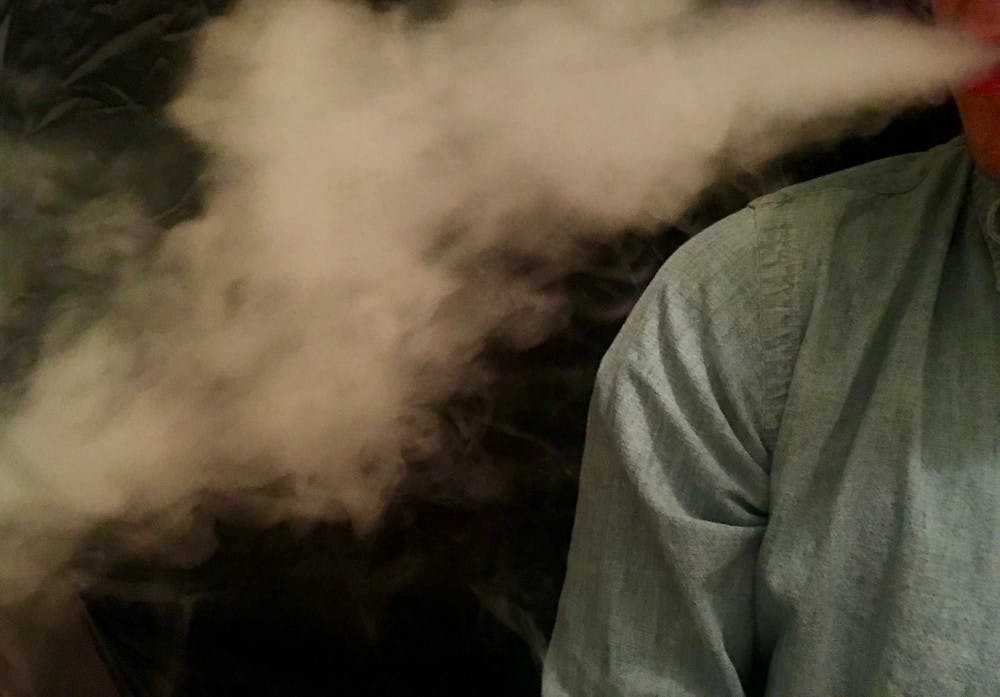Editor's note: This is a letter to the editor, an opinion piece that was not written by The Plainsman staff. The views expressed in columns and letters to the editor do not necessarily reflect the opinion of The Auburn Plainsman.
Vaping is a trend that is sweeping through many college towns, including Auburn. A wave of concern has accompanied the Juul’s rise in popularity, a dynamic that is illustrated by an article in this year’s Glomerata.
A haze continues to exist around what the science says about the effects of Juuling.
Is Juuling better than smoking traditional cigarettes? What about second-hand smoke from Juuls?
Vaping is defined as the use of a battery-powered device to heat a liquid or plant material that releases chemicals in an inhalable aerosol.
Some individuals choose to use vaping devices with flavoring or marijuana. Juuling is a nicotine-based form of vaping that uses nicotine salts from leaf tobacco in single-use cartridges.
The compact size and user-friendly nature of the Juul has contributed to its popularity, particularly among adolescents.
Auburn faculty members examined the prevalence of e-cigarettes in college-aged students and reported that 43 percent of Auburn students surveyed used electronic nicotine delivery systems, including Juuls, in the last month.
So why all the fuss about Juuling? Juuling is often seen as the “safer” option because it delivers the desired effects of nicotine without the effects of other harmful chemicals, which exist in traditional cigarettes.
But “safer” doesn’t mean safe.
Research has found that one Juul pod contains as much nicotine as a pack of cigarettes.
Nicotine levels vary across substances and liquids, and some devices may require manual refilling.
This means, in some cases, individuals may be taking in more nicotine than a pack of cigarettes.
It should also be noted that although the aerosol released from Juuls and other ENDS generally contains fewer toxicants than combustible tobacco products, it is not harmless “water vapor.”
Despite these facts, the majority, 45 percent , of Auburn students surveyed responded that they believe ENDS are less harmful than cigarettes.
In Health Promotion & Wellness Services, I often find myself talking about finances with students. The students I meet with are usually quick to recognize the financial impacts of alcohol and substance use.
With 19 percent of Auburn students reporting that they use their electronic vaping device over 20 times a day, it is easy to see how the costs of Juuling can quickly add up.
Auburn students’ reasons for using e-cigarettes for the first time is eye opening and concerning.
We know through public health theories the effects of social groups on individual behaviors, and it is no different with Juuling. Thiry-four percent of Auburn students surveyed reported they decided to smoke e-cigarettes for the first time because their friends were smoking.
You may be surprised to know that relieving stress was found to be the second most common reason Auburn students vaped for the first time. Only 9 percent of Auburn students surveyed responded that they smoked e-cigarettes for the first time to look cool.
So is it actually cool to Juul in Auburn? Or is it indicative of bigger problems worth discussing.
Shelby Flores is the coordinator of alcohol and drug prevention in the Office of Health Promotion and Wellness Services.
If you want to submit your own letter to the editor, check out our letters policy.
Do you like this story? The Plainsman doesn't accept money from tuition or student fees, and we don't charge a subscription fee. But you can donate to support The Plainsman.





